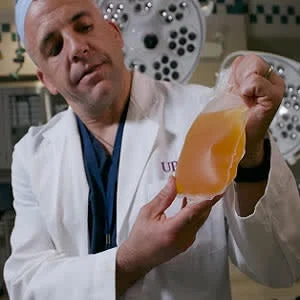In injured patients with severe bleeding, prehospital administration of plasma may help reduce the risk of downstream complications due to haemorrhage and shock. However, high-level evidence is lacking to show the efficacy of plasma transfusion in the prehospital setting. A new clinical trial (PAMPer) shows that two units of plasma given in a medical helicopter on the way to the hospital could increase the odds of survival by 10 percent for these trauma patients.
The findings, published in The New England Journal of Medicine, are a significant step towards ensuring the inclusion of prehospital care as a seamless component of healthcare delivery, rather than merely a transport mechanism.
"This is the first trial in a quarter century to have the potential to alter prehospital care so considerably," said co-lead author Jason Sperry, MD, MPH, professor in the departments of Surgery and Critical Care Medicine in the University of Pittsburgh School of Medicine.
The Prehospital Air Medical Plasma (PAMPer) trial was a phase 3 randomised trial that compared the administration of thawed plasma with standard-care resuscitation during air medical transport. The primary outcome was mortality at 30 days. From May 2014 through October 2017, 7,275 patients who were transported via air medical transport to nine participating trauma centres across the United States were screened for eligibility for the trial. Ultimately, 501 were enrolled. Most were men who had suffered a blunt trauma, such as from a fall from a height or vehicle crash.
Air medical bases at each participating institution were randomised to either administer plasma or standard care for one-month intervals. When the air transport teams were in their plasma interval, they'd begin administering two units of plasma to the patient as soon as they were deemed eligible for the trial. If the two units were completed during the flight, the team would revert to standard care. If they weren't completed, the plasma would continue to be administered when the patient arrived at the trauma centre.
After 30 days, 76.8 percent of the patients who received plasma were still alive, compared with 67 percent of those who received standard care. Plasma patients also had lower 24-hour and in-hospital mortality. Their blood clotted faster, and they had less need for blood transfusions than their counterparts who did not get the prehospital plasma.
Additionally, no significant differences between the two groups were noted with respect to multiorgan failure, acute lung injury–acute respiratory distress syndrome, nosocomial infections, or allergic or transfusion-related reactions.
Plasma is a yellowish liquid that helps blood clot. In the PAMPer trial, researchers used thawed plasma, which can last for five days after it is unfrozen. Its short shelf life may be a logistical challenge since air transport teams have to keep track of the expiration dates of the plasma they stock in their helicopters and discard or recycle unused plasma. But plasma that's never been frozen has a shelf life of 30 days, and freeze-dried plasma, which is approved for use in Europe, though not yet the U.S., can last much longer.
"Using thawed plasma, like we did in our trial, may not be feasible for all trauma centres," Dr. Sperry noted. "But there are alternatives available or that are being approved by regulators soon that can extend the exciting results of our trial to more traumatically injured patients, potentially saving hundreds of lives every year."
This clinical trial has a number of strengths, including its pragmatic design (i.e., with simple inclusion criteria that were based on vital signs) and patients with a wide spectrum of injuries and severities of injury were enrolled.
"Prespecified subgroup analyses showed a consistent survival benefit in the plasma group across various injury types, which suggests broad generalisability of the results," according to Dr. Sperry and co-authors.
Image Credit: Tim Betler/UPMC
References:
Sperry JL, Guyette FX et al. for the PAMPer Study Group (2018) Prehospital Plasma during Air Medical Transport in Trauma Patients at Risk for Hemorrhagic Shock. N Engl J Med; 379:315-326 DOI: 10.1056/NEJMoa1802345
Latest Articles
haemorrhage, PAMPer trial, plasma transfusion
In injured patients with severe bleeding, prehospital administration of plasma may help reduce the risk of downstream complications due to haemorrhage and shock. However, high-level evidence is lacking to show the efficacy of plasma transfusion in the pre







